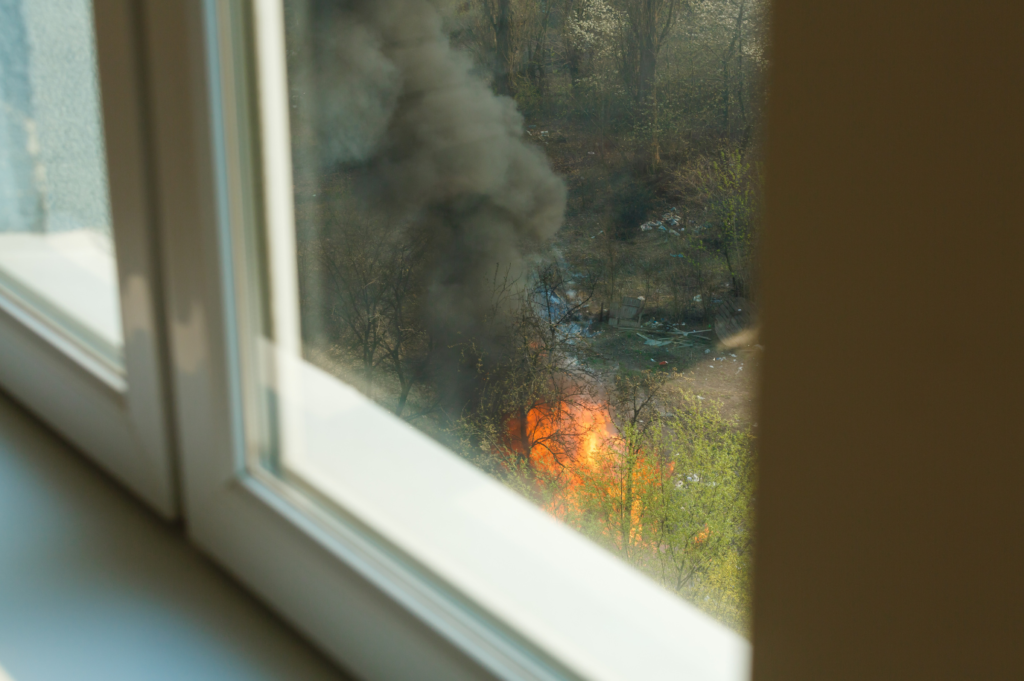You might have heard the term “defensible landscaping” when it comes to preventing fires. With the recent wildfires across the Unite States, and those in Alberta and across Canada in 2023, it has become clear that taking steps to protect your property from fires is essential. So, let’s talk about how you can make your home safer in the event of a wildfire or a neighboring fire.

What does Defensible Landscaping do?
Defensible landscaping helps protect your home from wildfires. It creates a barrier around your property, acting as a shield against raging flames or nearby fires. This space serves as a first line of defense, keeping your home safe and secure. It is not just about safeguarding your property, but also preventing house fires from spreading to the wild.
By strategically planting fire-resistant vegetation, removing dry or flammable materials, and spacing out plants, you can significantly reduce the risk. So, let’s embrace defensible landscaping and ensure our homes are well-protected from the fiery villains of nature!
What Does Defensible Landscaping Look Like?
When it comes to landscaping for fire safety, defensibility is key. It all starts with the design of your landscape and continues with the regular maintenance of your yard.
Design
While trees, plants, and grass are usually the fuel for fires, defensible landscaping still allows for their presence in a yard. To create a defensible landscape design, start by incorporating fuel breaks around the perimeter of your home using hardscape materials. Within about 30 feet of your home, use shrubs and shorter trees with reasonable spacing. Choose trees that are low in sap and have rough bark, ideally native to the area. It is also important to cut back tree limbs that are hanging over or touching your house. Within about 70 feet of your home, separate trees to reduce the spread of fire. Remove lower tree limbs to eliminate the “fire ladder” effect.
Additionally, it is important to place wood piles at least 30 feet away from your home. Use fire-resistant gravel and stone pathways in your landscape design, and make sure this area is well-irrigated.
Maintenance
Regular maintenance is crucial in creating a defensible landscape. Dead leaves, branches, and other debris from landscaping can easily become fuel for fires. Mow, prune, and trim your plants regularly, and clean your gutters to remove any debris that may have blown in from trees. It is also important to remove dead trees and plants immediately, and keep your yard clean of debris from trees.
Home Interior
Inside your home, make sure you have the necessary fire alarm, suppression, and protection measures in place. Install a fire alarm system to warn you in case of fire, and consider having fire suppression, such as sprinklers, installed in your house. Additionally, have fire protection items handy, such as fire extinguishers, and ensure that there is a clear way out of each room in case of emergency.
By implementing these design and maintenance strategies, you can create a defensible landscape that reduces the risk of fire damage to your home and property. Stay safe and happy landscaping!

